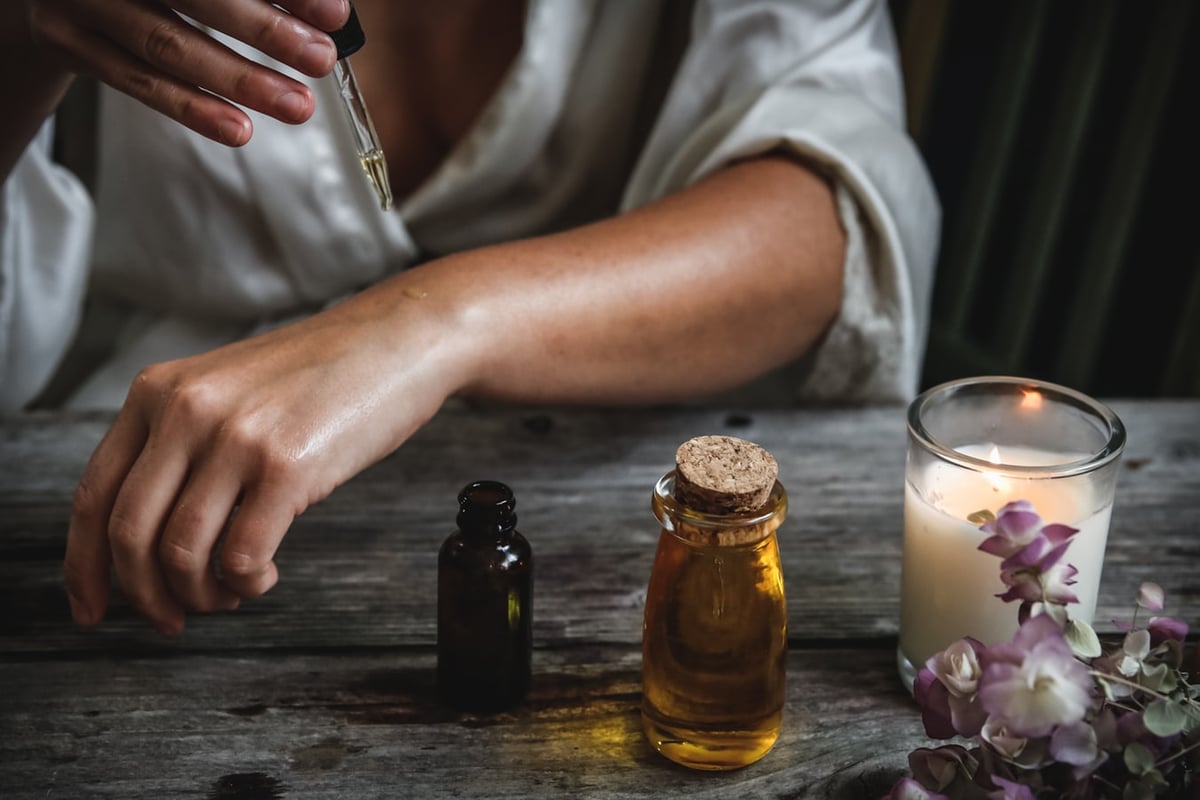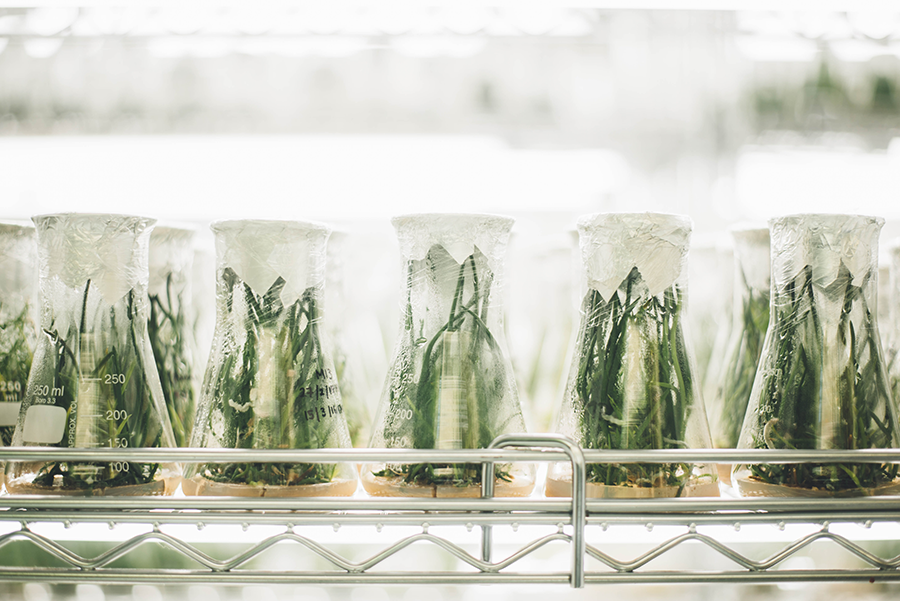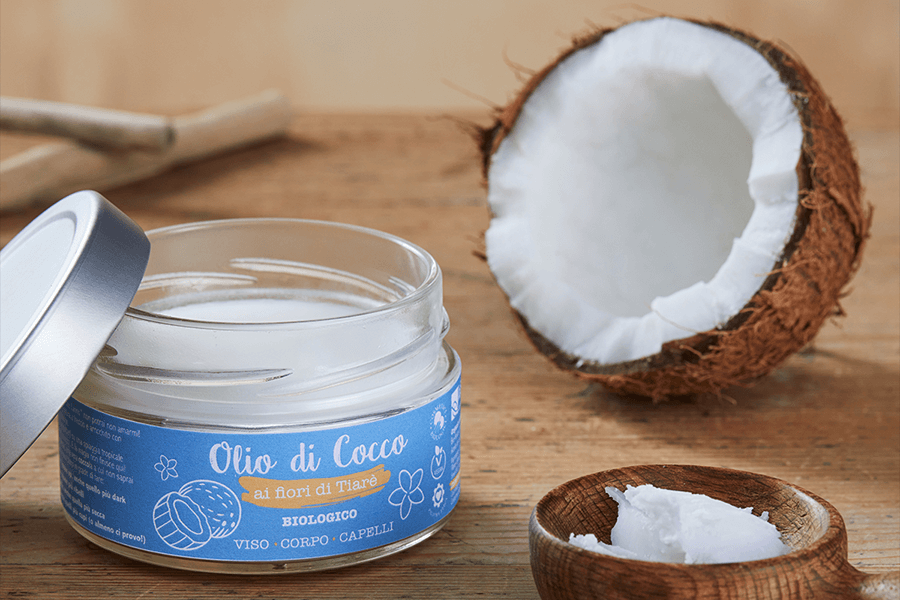Gli approfondimenti de La Saponaria
Salicylic Acid is no longer under observation. Properties and uses of this ingredient
Salicylic Acid is a very popular ingredient in cosmetics, especially in the treatment of impure skin. For a long time it was under scrutiny for being a possible endocrine disruptor but has now been cleared and is considered 100% safe. This is why we decided to introduce it in our Pure & Concentrated Actives range
Salicylic acid is a widely used ingredient in the cosmetic and dermatological industry: we find it mainly in products for combination and impure skin. It is known for its exfoliating and anti-inflammatory properties, which make it effective in combating acne, blackheads and other skin imperfections.
Salicylic acid is a beta-hydroxy acid (BHA) obtained mainly from willow bark. We often find it as a main ingredient in numerous skin care products, e.g. in lotions, creams and cleansers, and as a component of more intense chemical treatments, such as chemical peels. Its main action is to exfoliate the skin, removing dead cells and unclogging pores, thus preventing the appearance of pimples and blackheads. Let's find out more about this ingredient. Here is what we read in this in-depth article:
- What does salicylic acid do for the skin?
- What are the benefits of salicylic acid?
- When and how to use salicylic acid?
- Does salicylic acid have contraindications?
- Salicylic acid and its siblings
- Conclusions
What does salicylic acid do for the skin?
Salicylic acid has several uses and benefits for the skin. Here are some of its main purposes:
- Acne treatment: salicylic acid is widely used in acne treatments and products to combat skin blemishes. Its exfoliating action helps remove dead cells and excess sebum that can clog pores and cause pimples. It also has antibacterial properties that help reduce inflammation and prevent bacterial proliferation
- Reduction of blackheads: blackheads, or open comedones, are caused by the clogging of pores by sebum, dead cells and impurities. Salicylic acid helps to gently remove these impurities and exfoliate the skin, thus reducing the appearance of blackheads and improving skin texture.
- Skin exfoliation: due to its exfoliating action, salicylic acid removes dead skin cells and promotes cell renewal. This can make the skin brighter, improve its texture and promote the penetration of other beneficial ingredients contained in the products that we are going to include in the next steps of our skin care.
- It is also used in the treatment of warts and seborrhoeic keratosis, but in these cases it is always best to seek medical advice: before using salicylic acid or products containing this ingredient, it is advisable to consult a dermatologist or skin care professional for a proper evaluation and personalised advice.

What are the benefits of salicylic acid?
Salicylic acid offers several benefits for the skin. Here are some of the main benefits associated with its use:
- Exfoliating action: as we have seen, salicylic acid has the ability to gently exfoliate the skin, removing dead cells and excess sebum and promoting cell renewal. Regular exfoliation makes the skin look brighter, smoother and younger.
- Acne treatment: one of the best-known benefits of salicylic acid is its effect in treating acne. Salicylic acid penetrates pores and dissolves impurities that can cause pimples, such as sebum, dead cells and bacteria. It also reduces the skin inflammation associated with acne, helping to reduce the appearance of new lesions and improve skin health.
- Reduction of blackheads: blackheads, or open comedones, form when pores are clogged with sebum and dead cells that become oxidised in the air. Salicylic acid helps to gently but effectively exfoliate the skin, removing these impurities and reducing the formation of blackheads. This can help improve the clarity and cleanliness of pores.
- Antibacterial action: salicylic acid has antibacterial properties, which help fight the bacteria responsible for acne and skin infections. By reducing the presence of bacteria on the skin, it can help prevent the proliferation of pimples and maintain healthier skin.
When and how to use salicylic acid?
Salicylic acid can be used in different ways and in different formulations, depending on the needs of the skin and the specific product. Here are some general guidelines on the use of salicylic acid:
- Choosing the right product: salicylic acid can be found in various skin care products, such as creams, lotions, toners, masks and peels. Choosing the right product depends on the needs of your skin and the condition you want to treat. Make sure you read the product instructions carefully before use and follow the manufacturer's directions. A good idea would be to choose dermatologically tested Salicylic Acid for sensitive skin, such as our facial serum.
- Skin cleansing: before applying Salicylic Acid, make sure to clean your face or the affected area thoroughly. Use a gentle cleanser suitable for your skin type to remove make-up, excess sebum and impurities. One idea could be to use Deep Pure, a facial cleanser specifically for combination and delicate skin.
- Targeted application: apply salicylic acid only to the affected areas. Avoid applying it around the eyes or on any open wounds or skin irritations: cosmetics should always be used on undamaged skin. Use a small amount of the product and massage it gently into the skin in circular motions..
- Frequency of use: the frequency of use depends on individual tolerance and product concentration. Our Salicylic Acid can be introduced into any beauty routine and can be used morning and evening without any problems.
Does salicylic acid have contraindications?
Salicylic acid has long been under scrutiny because it is suspected of being a possible endocrine disruptor. This concern led to numerous studies to carefully evaluate the safety of this ingredient. However, recent scientific research has definitively cleared salicylic acid of these suspicions.
Extensive studies have in fact shown that salicylic acid has no endocrine disrupting activity in humans and have confirmed its 100% safety, even for prolonged use over time. These conclusions derive from rigorous analyses conducted by leading international health authorities and published in prestigious scientific journals, thus reassuring consumers of the absolute safety of its use in quantities considered safe in cosmetics and dermatology.
Salicylic acid and its siblings
In addition to Salicylic Acid, other ingredients can also be used in the treatment of combination and oily skin:
- Succinic Acid: among the most talked-about active ingredients of the moment is Succinic Acid, which is particularly popular with acne-prone skin for several reasons. Studies have shown significant activity of Succinic Acid against one of the bacteria responsible for acne formation, Propionibacterium Acnes. It is the ideal ally for treating combination skin, not least because of its smoothing action: it counteracts blemishes and spots, including those caused by age, helps to make wrinkles and scars left by acne less noticeable, and makes the complexion even. Succinic acid has a high regenerating power but at the same time is dermocompatible and non-photosensitising. It gently and effectively helps regenerate the skin, making it brighter and more toned. Finally, it helps combat free radicals by performing an antioxidant and anti-ageing action. It is therefore suitable for even the most sensitive skin and, unlike Salicylic Acid, has no particular contraindications.
- Shikimic acid: this is extracted from star anise and is ideal for combating skin blemishes. Recent studies have shown an inhibiting action of shikimic acid against Propionibacterium Acnes which, as we have seen, is one of the main bacteria responsible for acne. It also has the ability to regulate sebum production. It is also a gentle exfoliant that promotes skin turnover without irritating the skin, making the complexion even and radiant. Again, it proves to be a very well-tolerated ingredient even for the most sensitive skin.
- Acido Azelaico: is a natural substance produced by a yeast normally found in skin flora; it is also found naturally in wheat, rye and barley. It is among the most widely used substances in anti-acne treatments due to its bactericidal and bacteriostatic action against micro-organisms that are found on the surface layers of the epidermis, causing the skin lesions characteristic of acne. Its gentle exfoliating action makes it excellent for treating and lightening pimple spots and making the skin brighter and more even. There are no particular contraindications to its use
- Glycolic acid: glycolic acid is another effective chemical exfoliant that can help reduce blemishes in combination and oily skin. Derived from sugar cane, glycolic acid works by gently exfoliating the skin and stimulating collagen production. This can help improve skin texture, reduce the appearance of enlarged pores and smooth out imperfections.
- Niacinamide: niacinamide is able to protect and strengthen the skin barrier by stimulating the production of ceramides (essential components of the epidermal structure) and stimulating the differentiation of keranocytes, thus accelerating cell turnover. It is an ideal active for combination and impure skin thanks to its sebum-regulating action.
- Green clay: green clay is a natural remedy widely used to treat oily and impure skin. It absorbs excess sebum and removes impurities from the pores, leaving the skin fresh and purified. It can be used as a facial mask or as a component of gentle facial cleansers.
- Tea tree oil: known for its antibacterial and anti-inflammatory properties, it can be used to treat acne and reduce skin inflammation. However, it should always be diluted before application on the skin, as it can be irritating if used in high concentrations.
Conclusions
In conclusion, salicylic acid is a widely used ingredient to treat combination and impure skin due to its exfoliating and anti-inflammatory properties.
As long as this ingredient was being studied, we at La Saponaria decided not to include it in our lines. Now that the observation period is over and the ingredient has proven to be 100% safe, it has become a new member of the Pure & Concentrated Actives family.

Scritto da Simona
È la scrittrice digital de La Saponaria, sempre alle prese tra una newsletter da inviare e un articolo del blog da pubblicare, si prende cura dei nostri social e del nostro e-commerce.




































